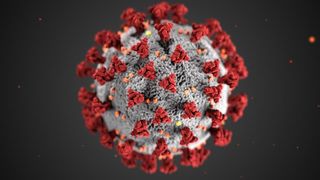
Coronavirus Disease 2019
Did I Have the Infection and Not Know?
Are asymptomatics the silent majority of COVID-19?
Posted April 2, 2020 Reviewed by Jessica Schrader

Who’s been infected with the COVID-19 virus? Did you experience the virus, and never know?
Many may be riveted by reports of 1 million worldwide cases as of today. Yet that is a severe undercount, with major implications for your health and national public and economic progress.
Cases
The definition of “case” varies radically around the world. In many countries, even people who died of coronavirus are not counted. In the U.S., it has been people who are sick and have found a place where they were able to get a swab PCR test for the presence of infection.
I’ve already had patients with classic coronavirus symptoms who were refused tests because they did not have clear evidence of contact with someone who tested positive.
That’s a nice Catch-22. If you don’t test, you don’t know. This is completely understandable from a public health point of view when the amount of tests and personal protective equipment is grossly inadequate. In those circumstances, you only test people you think might need hospitalization.
But this is the small tip of the iceberg, as we learn from studies in Italy and the Netherlands.
Vo
The small town of Vo was quarantined on March 6, 2020, after it had the first index death case in Italy. It became the setting for a public health experiment.
All 3,000 people in the town were tested for coronavirus by swab and then retested nine days later. On the first pass 89 showed evidence of infection; the next time, six.
This was taken as evidence that quarantine worked. But it also showed that very early in the perception of infection, 3% of the local population were already afflicted.
And 70% were, according to the authors, either completely asymptomatic or with very mild symptoms. They didn’t know they had been infected.
That was nearly a month ago. There has been much greater infection spread since.
The Netherlands
There is also the Dutch example from hospital workers in Breda and Tilburg. Two weeks after the first index case in the country on February 27, 9,700 hospital workers were asked if they had had recent cold symptoms.
About 14% said yes. They were then tested by swab for coronavirus. Of this group of hospital workers then on the job, 6.4% tested positive.
At a time when infection had been listed in the country for two weeks, a minimum of 1% of these Dutch hospital workers were infected with the coronavirus.
Why a minimum? Because only 14% of the total population were tested. If you take a measure that 20% of the 86% untested actually had had the infection, a number in keeping with several international surveys and vastly less than was found in Vo, you get 2.6% of workers already infected very shortly after the first case reported in the country.
How many had been exposed to known, tested coronavirus infected people? One in 33 (3.5%). Consider that number when looking at the U.S. case data.
Now, this was a group of hospital workers, even if most had nothing to do with patient care. They were presumably more exposed than the average person on the street. Yet 8% of the coronavirus positive workers had their symptoms before the index case for the whole country. And nearly two-thirds kept working with their mild, cold-like symptoms.
And there is still another major factor for a severe undercount of cases:
Viral Immunity
Only now are antibody tests becoming available in the U.S. to see who has been infected previously, and had an immune response.
The human immune response is complex as hell, but engages at least two systems—innate immunity and acquired immunity. Testing so far has only looked at people with coronavirus present in their nasopharynx, generally tested by reverse transcriptase PCR. The initial response to infection is our innate immune response, including activated white cells, cytokines, and a cascade of other protective actions. Antibody responses take a week to two weeks in general to appear. If they are strong enough, they will markedly help prevent future infection, both for the individual and the population. That’s what vaccines do—create an antibody response.
We don’t know how many people have had antibody responses to what they thought was a cold but was COVID-19. We don’t know how many people have had antibody responses but were completely asymptomatic. Based on the numbers from Vo and the Netherlands we can infer that the number is sizable.
Put it together: most people with probable COVID-19 illness have not been tested. When population tests are done, large numbers of viral carriers are found asymptomatic. Many more may have been infected and developed antibody responses, but would not show the presence of the virus in their nasopharynx.
Bottom Line
At this moment, on April 2, it is probable that millions of Americans have been infected by the SARS Cov 2 virus and don’t know it. We really need that information. We don’t have it.
So now we need to test, test, test. Of the $500 billion to be spent on shoring up American corporations, at least $1 billion should be spent on field epidemiology to find the real numbers of people infected by the virus and who have developed antibody responses—swabs and serology. Knowing those numbers will be critical to control the virus and get the economy back to speed.
We will need to know if antibody responses are present, especially in health workers, and whether they are protective of future infection. Presumably, those with antibody responses will be at lesser risk, but we won’t need till we test and test and retest.
This demands a national effort. The obvious agent to do it is the CDC. That its leadership suppressed research data early when it was most needed, did not use WHO tests that could then be compared with other countries, created and sent out defective tests, and did not ramp up testing services in time, is cause for concern. Having a former director like Dr. Tom Frieden conduct such an effort might allay some worries among my physician colleagues.
But CDC should do it, and it must be a national effort. As in Britain, many will volunteer to help. They will be glad to help others, and glad to get the country back on its feet. People are realizing your health is my health, and my health yours.
A related issue is that once it's realized how many have already been infected, generalized use of masks makes more sense than ever. The CDC has slowly gotten round to this position.
Except we need billions of them. It’s great that people are sewing and creating their own masks. But isn’t American industry more suited to producing the required numbers?
Just as with ventilators, a national effort directed by the government is needed to make the masks required.
We cannot move soon enough.



